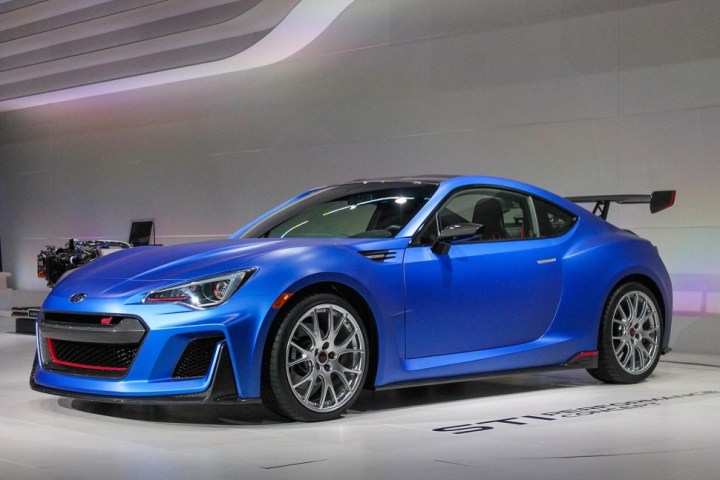
Car and Driver is citing insider sources that say the Japanese automaker is testing a mid-engined sports car at the Tochigi proving grounds in Japan. Not much is known about the mystery prototype but the bones are reportedly that of a BRZ, and joining a turbocharged boxer engine are two electric motors.
The gas engine sends power to the rear wheels while the electric motors drive the front wheels — much like Acura’s new NSX. The four-wheel drive setup plus a torque vectoring function sounds like a recipe for one heck of a track-stomping whip. Subaru is planning to introduce a sports car concept based on the prototype to gauge customer interest before it decides whether to make a production version or not. If it decides to greenlight such a vehicle it will undoubtedly be the highest performance consumer Subaru to date.
Speaking of production, the new vehicle would likely ride on the brand’s Subaru Global Platform that was just introduced this week. The gas engine should be a turbocharged 1.6-liter four-cylinder and when mated to the electric motors will make upwards of 330 horsepower.
You might think a halo model is a bit out of the blue, but Subaru is having incredible sales success lately and a new sports car icon could be just what the company needs to transcend its current position in the market. With an expected one million vehicle sales for the first time ever this year, Subaru is putting its entry-level rivals on their heels in almost every one of its segments.
Subaru may have a lot in common with established players like Honda in terms of the diversity of its model range before long.
Editors' Recommendations
- The best sports cars
- Hybrid model will be ‘highest performance 911 of all,’ Porsche CEO says
- Thieves may again be targeting one of your hybrid car’s most valuable parts
- Toyota and Subaru are expecting again, but this time it’s not a sports car
- Tuners may have a big problem with Chevy’s mid-engine Corvette, report says


